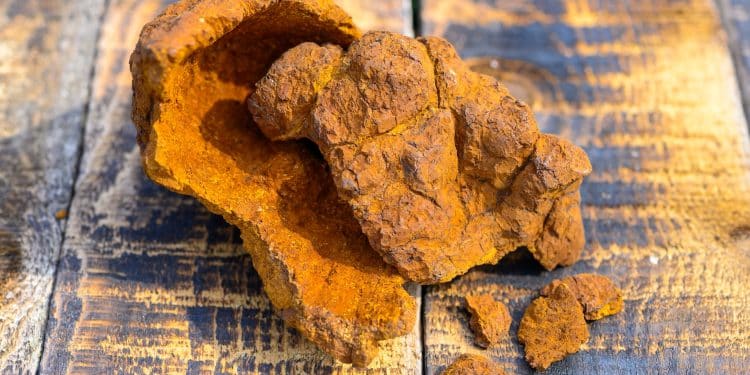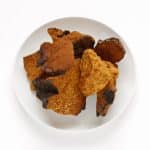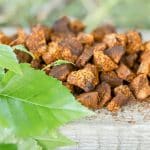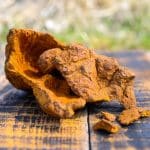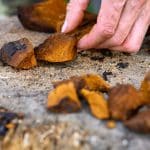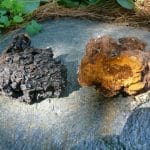Chaga and cordyceps are well-known functional mushrooms, or maybe you have heard them called medicine mushrooms. They are distinct by nature, such as taste and texture, the way that we can obtain them, as well as the quality that they offer to the body, but they both offer powerful health benefits to the body. This article will compare chaga and cordyceps.
Facts About Cordyceps
Cordyceps is a member of the fungus family Ascomycetes, containing about 600 species (including truffles, morel mushrooms, and Ergot fungi). The fungus is prized mostly for its incredible power to boost energy and decrease fatigue. Cordyceps is nothing new, having been the cornerstone of Chinese medicine for over 1,300 years. Cordyceps fruiting bodies, are grown from insects, more often caterpillars, which is how they got their other name, the caterpillar mushroom.
Although there are a few varieties of cordyceps growing elsewhere, the original, celebrated variety, Cordyceps sinensis, grows exclusively in the Himalayan plateau. This means harvesting of the mushroom can be quite difficult and costly. Some experts estimate that the harvesting of cordyceps generates 90% of cash income in areas in Tibet where it is found. Himalayan collectors hope to spot about ten small specimens per day, which would explain why wild cordyceps can sell for up to $20,000 per pound!
Fortunately, there is another species (Cordyceps Militaris) which is actually cultureable using plant-based materials. This is the one used in mushroom supplements today. Cordyceps are best loved for their energy-boosting effects, thanks to the beta-glucans found in them.
The beta-glucans will transport oxygen into your body at the cellular level, not only decreasing disease incidence, but boosting endurance and energy. The mushroom also increases the body’s levels of adenosine triphosphate (ATP). ATP is the main source of energy for the body, so it is needed by all cell processes. ATP is the main reason why creatine is such a popular supplement since creatine supports healthy ATP levels.
The health benefits of the mushroom include its anti-inflammatory properties (helping blood flow, heart health, and lower cholesterol). Its beta-glucan, along with another chemical compound called cordycepin, is known for shrinking tumors and stimulating the production of lymphocytes.
Facts About Chaga Mushroom
Chaga is a polypore fungus found mostly on Birch trees in colder climates. It grows on live trees, and is parasitic. That means that the fungal mycelium gets into a mature trees stem via cracks or a hole in its bark after spores land there, or after being dropped off via birds or insects, then starts to consume and synthesize the health compounds we humans love to consume.
Learn more: Is Chaga mushroom psychedelic or hallucinogenic?
These mushrooms thrive best outside yellow and white birch trees. You can find chaga mushrooms abundantly in northern hemisphere, which has higher altitude forests such as the Northern Hardwood Forests. Chaga grows well in cold, wet conditions, with great resistance to surviving harsh winters.
Natural healers and practitioners of traditional medicine have known about this mushroom for centuries. Recent scientific studies demonstrate Chaga’s efficacy for treating many diseases and ailments. Memorial Sloan Kettering Cancer Center lists purported uses for Chaga to treat and prevent cancer, boost the immune system, decrease inflammation, and protect the liver.
As mentioned, these types of medicinal mushrooms are not edible by the standard methods. Instead, you have to extract their properties. Extracting requires prolonged boiling or steeping.
This process makes the beneficial components bioavailable to the human body, meaning that the body is capable of absorbing nutrients. Like cordyceps, Chaga has amazing immune-modulating powers. Chagas polysaccharides, particularly beta-glucan, have the ability to boost lymphocyte production (a type of white blood cell that modulates immune responses to infectious germs and other foreign substances). Chaga is also known to be one of the richest sources of antioxidants found in nature.
Learn more: Does chaga mushroom strengthen your immune system?
Antioxidants are what keep your body safe from the effects of free radicals that would otherwise cause degeneration of the cells (chronic fatigue, chronic pain, chronic disease, and cancer). Chaga is also high in betulin, which has anti-tumor and anti-cancer properties. Betulin produces a derivative called betulinic acid, which is antibacterial, antiviral, anti-inflammatory, and anti-oxidant, and has adaptogenic properties. This is what makes Chaga capable of balancing and rebuilding your whole system, allowing you to perform at your highest potential!
Chaga vs Cordyceps, Which is Better?
As mentioned, both chaga and cordyceps are functional foods or medicinal mushrooms, but they offer very different health benefits. Cordyceps are more loved for their energy-boosting effects and cardiovascular support. The beta-glucans will transport oxygen into your body at the cellular level, not only decreasing disease incidence, but boosting endurance and energy. If you are looking for health benefits related to the immune system, Chagas anti-inflammatory, immune-boosting, digestive-focused, detoxifying properties are more in your wheelhouse.
Before choosing one over the other, determine what processes you want your body to support. If preferred, mushrooms can even be taken together, just be sure to purchase your chaga and cordyceps from high quality vendors like Real Mushrooms or FreshCap. They grow and harvest a lot of their own mushrooms from completely organic sources. Unlike other companies that use mycelium and grain fillers, which dilute the potency and amounts of the beneficial compounds found in these mushrooms.
Chaga vs Cordyceps | Which is More Accessible?
When talking about Chaga, it is important to keep in mind that Chaga gets the majority of its nutritional value from the Birch Tree. The medicinal benefits of Chaga harvested from trees other than birch trees can be quite different. You should pay particular attention if your Chaga is harvested from the wild, because we have heard about Chaga being grown in labs.
This has been a major concern over the past couple years, with the rise in Chagas mainstream popularity. Business-driven companies are trying to cut corners, grow Chaga more quickly and efficiently in enclosed spaces. This means your purchased Chaga has zero health benefits if it’s been grown in grain, or if the product lists “chaga mycelium” as the main ingredient in the supplement. Thankfully high quality chaga products are still very affordable, but you’ll want to ensure that whatever product you choose is using chaga fruiting body as the main ingredient.
You can find our favorite capsules, powders, and tincture’s on the following pages of our website and learn more about each individually:
Whereas cordyceps is another story, mentioning the original, celebrated strain, cordyceps sinensis, grows only in the Himalayan plateau. This makes the mushroom difficult to acquire, which is reflected also in its price. Fortunately, there is another nearly equally potent species called the cordyceps militaris, that you can also cultivate in plant-based materials and at home, using grow kits, and it’s also used in most supplements.
